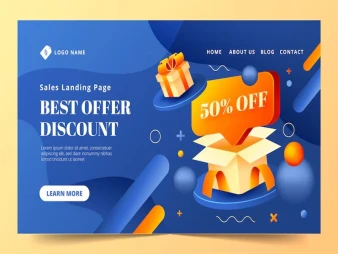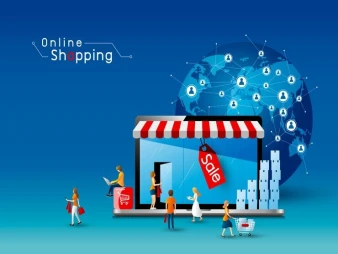Free support 24/7
Free support 24/7

Introduction: In the age of the Internet and e-commerce, Traffic has become vital to the success of any online store. Traffic refers to the number of visitors who visit your website or online store. Increasing traffic contributes to increasing sales opportunities and continuous improvement of performance. In this article, we'll explore the concept of traffic and highlight some ways to increase your online store visits.
Part 1: The concept of traffic: Traffic is a group of visits that a website or online store receives during a specific period of time. Traffic can be an indicator of the site's popularity and interest by the target audience. Traffic is affected by factors such as content quality, marketing strategies, and user experience.
Part 2: Ways to Increase Online Store Visits:
Website content improvement:
Create value-added content for visitors, such as educational articles and guides.
Use keywords related to your industry for search engine optimization.
Internet Marketing Strategies:
Use social media marketing to engage with the audience and increase awareness of your store.
Run paid ad campaigns on platforms like Google Ads and Facebook Ads.
User experience improvement:
Make your site easy to use and fast to load on all devices.
Improve site design and menu organization for easier navigation.
Search Engine Optimization (SEO):
Optimize your pages and content to match search engine standards.
Create quality external links from trusted sites that contribute to improving your ranking in search results.
Provide multimedia content:
Use images and videos to capture visitors' attention and present information in a more interactive way.
Email Marketing Program:
Collect email addresses from visitors and sign up for the mailing list.
Send newsletters and special offers to subscribers.
Part 3: Using Marketing Techniques:
Content marketing:
Create engaging and effective content that targets the issues and interests of your target audience.
Use a variety of content types such as blogs, videos, and podcasts to broaden your traffic.
Public Relations (PR) Marketing:
Establish partnerships and relationships with bloggers and journalists in your field to enhance your presence on various media and websites.
Influencer marketing:
Find influencers in your industry who have a large following, and work with them to promote your products or services.
Part 4: Improving the search experience:
Advanced internal search:
Optimize the search system within your site to ensure that visitors can find products easily.
Easy and simple browsing:
Make the navigation menu and categories clear and organized to make it easier to navigate and find products.
Part 5: Using web analytics:
Website analytics:
Use web analytics tools like Google Analytics to understand visitor behavior, top pages, and conversion rate.
Track sources:
Determine which sources bring you the most traffic and conversions, and make them an essential part of your strategy.
Part 6: Improving the Payment and Shipping Experience:
Facilitate the payment process:
Provide a variety of payment options to meet the needs of different customers.
Fast and reliable shipping:
I offer fast and reliable shipping options to improve customer experience and increase confidence.
Part 7: Interaction with Visitors:
Comments and ratings:
Enable reviews and ratings on products to enable visitors to share their experiences.
Good customer service:
Provide fast and efficient customer support through multiple channels such as live chat and email.
Part 8: Make offers and discounts:
Special offers and deals:
Offer special offers and deals to your visitors like product discounts or buy-one-get-one-free deals.
Loyalty and reward programs:
Create a loyalty program that rewards repeat customers with rewards like points or discounts on future purchases.
Part 9: Activating word of mouth marketing:
Social sharing:
Encourage customers to share their experiences with your products on social media.
Referral Program:
Create a referral program that rewards customers when they refer their friends to shop at your store.
Part 10: Mobile Experience Optimization:
Responsive design:
Make sure your store is responsive and suitable for small screens like smartphones and tablets.
Download speed improvement:
Optimize site loading speed on mobile devices for a smooth user experience.
Part 11: Continuity of Improvement:
Analysis and evaluation:
Keep constantly analyzing your site's performance and evaluating the results and your strategies.
Trial and testing:
Experiment and test different strategies to see what works best for your audience.
Part 12: Continuous innovation and development:
Introducing new products:
Keep your products refreshed regularly and offer new options to customers to keep them interested.
Listen to customer feedback:
Listen carefully to customer feedback and implement required improvements.
Part 13: Building on Trust:
Certificates and credits:
If you have certificates or accreditations confirming the quality of your products or services, display them on the site.
Customer testimonials:
Post reviews and testimonials from previous customers to increase confidence in new visitors.
Part 14: Personal Communication:
Customer interaction:
Respond promptly and personally to customer inquiries and needs to enhance relationships.
Newsletters:
Run regular newsletters to keep customers informed of the latest developments and offers.
Part 15: Data and Privacy:
Data protection:
Within policies and procedures to protect customer data and apply privacy standards.
GDPR and CCPA Obligations:
Ensure compliance with local data protection laws such as GDPR in Europe and CCPA in the US.
Part 16: Interaction with the community:
Participation in events and events:
Participate in online trade shows and local events to increase public awareness of your store.
Local and cultural content:
Provide content that deals with local and cultural issues
It attracts the local audience and enhances your contact with them.
Part 17: Communication with bloggers and influencers:
Collaboration with bloggers:
Collaborate with bloggers in your field to review and promote your products through their channels.
Collaboration with influencers:
Find digital influencers who fit with your audience and collaborate with them to boost your store.
Part 18: Providing Personal Experience:
Customize offers:
Offer special offers and discounts for personal celebrations such as birthdays.
Products recommendation:
Use product recommendation techniques to offer products that suit each customer's interests.
Part 19: Exploiting success stories:
Share customer stories:
Share success stories of customers who have benefited from your products or services.
Your own success stories:
Share your personal journey and successes in providing quality products or services.
Part 20: Interactive experiences:
Games and competitions:
Launch encouragement games and competitions for visitors to increase their participation and interaction.
Virtual experiences:
Adopt virtual experiences that allow visitors to interactively review products before purchasing.
Part 21: Benefit from Email Marketing:
Mail Campaigns:
Send regular email campaigns promoting new offers and motivating customers to visit the store.
Monthly newsletters:
Offer monthly newsletters with valuable information and special offers to keep visitors coming back.
Part 22: Make use of video content:
YouTube channel:
Create a YouTube channel for your store and provide video content showcasing products and providing valuable advice.
Live broadcast via social media:
Live-stream videos promoting the shows and giving a behind-the-scenes look.
Part 23: Investing in User Experience:
Easy and intuitive design:
Provide an easy-to-use user interface that ensures a comfortable experience for visitors.
Experiment test:
Continuously test user experience to improve weaknesses and enhance strengths.
Part 24: Providing educational and instructional content:
Lessons and tips:
Offer tutorials and tips that will help customers use your products or services.
Guides and Handbooks:
Create guides and brochures showing how to get the most out of your products.
Part 25: Take Advantage of Socials:
Participate in online communities:
Join online forums and groups related to your field to share experiences and interact with visitors.
Live broadcast via social media:
Go live on social media platforms to engage with your audience directly and grab their attention.
Conclusion: With these multiple strategies, you can achieve a significant increase in your online store visits and improve your visitor experience. Continue to develop and diversify your strategies based on performance analysis and audience expectations to achieve sustainable success and continuous growth. Continuing to improve and develop your online store will contribute to achieving your goals and increasing your success in the long run.

Flash sales are not just a temporary marketing tool. They are a smart tool to quickly drive sales and increase engagement in your store

تعرف على الطريقة الذكية اللي تخليك تستفيد من تجارب عملاءك السابقين في تسويق منتجاتك الجديدة وزيادة المبيعات
You can create your store easily